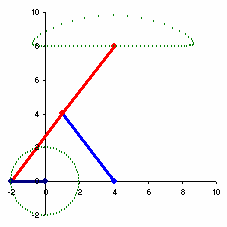Surface Hardening Treatment (Case Hardening)
Source: Google Book
Many applications require high hardness or strength primarily at the surface, and complex service stresses frequently require not only a hard, wear–resistant surface, but also core strength and toughness to withstand impact stress. To achieve these different properties, two general processes are used: 1) The chemical composition of the surface is altered, prior to or after quenching and tempering; the processes used include carburizing, nitriding, cyaniding, and carbonitriding; and 2) Only the surface layer is hardened by the heating and quenching process; the most common processes used for surface hardening are flame hardening and induction hardening.Carburizing: Carbon is diffused into the part’s surface to a controlled depth by heating the part in a carbonaceous medium. The resulting depth of carburization, commonly referred to as case depth, depends on the carbon potential of the medium used and the time and temperature of the carburizing treatment. The steels most suitable for carburizing to enhance toughness are those with sufficiently low carbon contents, usually below 0.03 percent. Carburizing temperatures range from 1550 to 1750 degrees F, with the temperature and time at temperature adjusted to obtain various case depths. Steel selection, hardenability,and type of quench are determined by section size, desired core hardness, and service requirements.
Three types of carburizing are most often used: 1) Liquid carburizing involves heating the steel in molten barium cyanide or sodium cyanide. The case absorbs some nitrogen in addition to carbon, thus enhancing surface hardness; 2) Gas carburizing involves heating the steel in a gas of controlled carbon content. When used, the carbon level in the case can be closely controlled; and 3) Pack carburizing, which involves sealing both the steel and solid carbonaceous material in a gas-tight container, then heating this combination.
With any of these methods, the part may be either quenched after the carburizing cycle without reheating or air cooled followed by reheating to the austenitizing temperature prior to quenching. The case depth may be varied to suit the conditions of loading in service. However, service characteristics frequently require that only selective areas of a part have to be case hardened. Covering the areas not to be cased, with copper plating or a layerof commercial paste, allows the carbon to penetrate only the exposed areas. Another method involves carburizing the entire part,
Nitriding: The steel part is heated to a temperature of 900–1150 degrees F in an atmosphere of ammonia gas and dissociated ammonia for an extended period of time that depends on the case depth desired. A thin, very hard case results from the formation of nitrides. Strong nitride-forming elements (chromium and molybdenum) are required to be present in the steel, and often special nonstandard grades containing aluminum (a strong nitride former) are used. The major advantage of this process is that parts can be quenched and tempered, then machined, prior to nitriding, because only a little distortion occurs during nitriding.
Cyaniding: This process involves heating the part in a bath of sodium cyanide to a temperature slightly above the transformation range, followed by quenching, to obtain a thin case of high hardness.
Carbonitriding: This process is similar to cyaniding except that the absorption of carbon and nitrogen is accomplished by heating the part in a gaseous atmosphere containing hydrocarbons and ammonia. Temperatures of 1425–1625 degrees F are used for parts to be quenched, and lower temperatures, 1200–1450 degrees F, may be used where a liquid quench is not required.

Induction Hardening: This process is similar in many respects to flame hardening except that the heating is caused by a high-frequency electric current sent through a coil or inductor surrounding the part. The depth of heating depends on the frequency, the rate of heat conduction from the surface, and the length of the heating cycle. Quenching is usually accomplished with a water spray introduced at the proper time through jets in or near the inductor block or coil. In some instances, however, parts are oil-quenched by immersing them in a bath of oil after they reach the hardening temperature.




Comments